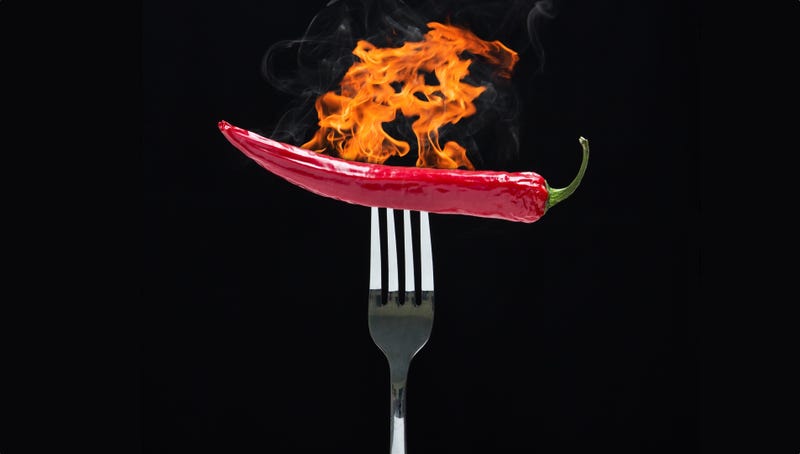Chili.
This time I will talk about something with which you identify Mexico, no, not tacos or tequila, I mean chili.
The chili for over 500 years has been part of the diet of Mexicans; the different Hispanic cultures, including the Aztec, Zapotec and Teotihuacan, immortalized its image in codices and glyphs made of stone.
The word chili, comes from Nahuatl chilli, and is the fruit (berry) of various species of the genus Capsicum of the nightshade family.
The word chili, comes from Nahuatl chilli, and is the fruit (berry) of various species of the genus Capsicum of the nightshade family.
Mesoamerica is the center and the development of chili, so it is not surprising that Mexico has the greatest biodiversity of this product worldwide.
The National System of Plant Genetic Resources for Food and Agriculture (SINAREFI), in 2013 launched the second edition of the map Diversity, chilies in Mexico, where 64 different varieties distributed throughout the country are contemplated, - although think there, more than 200 native varieties -. Only in Oaxaca over 25 different types were found.
The National System of Plant Genetic Resources for Food and Agriculture (SINAREFI), in 2013 launched the second edition of the map Diversity, chilies in Mexico, where 64 different varieties distributed throughout the country are contemplated, - although think there, more than 200 native varieties -. Only in Oaxaca over 25 different types were found.
For its production, the most important are the serrano, jalapeno, guajillo and ancho, followed by the pasilla, habanero, de árbol and manzano.
The most consumed chili, is the serrano, its name is because it is grown in the Mountains of Puebla, Hidalgo, Veracruz, Sonora, Guerrero and Mexico.
The most spicy chili in the country, is the habanero, the only chili has Designation of Origin in the Yucatan peninsula which includes the states of Yucatan, Campeche and Quintana Roo, where they are experts in growing, habanero chili and use it.
The largest production in the country, is the ancho chili, which is actually a mature and dry poblano that is characterized by reddish. It occurs mainly in the states of Zacatecas, Durango, San Luis Potosi, Guanajuato and Puebla, where it is used in moles and marinades.
Some benefits from eating chili.
- It helps circulation. Chili has proved capable of breaking blood clots, increase circulation and lower blood pressure.
- It stimulates metabolism and helps you lose weight. Capsaicin, a large component of chilies has thermogenic properties that can boost your metabolism up to 8% after a meal. This temporary stimulus can help you avoid cravings.
- It can improve the health of your heart. Chilies help reduce the effects of LDL (or "bad") cholesterol that can cause heart problems. In cultures where much spicy food is eaten, rates of heart attacks and strokes are lower.
- Eating spicy foods puts you in a better mood. Releases endorphins and increases serotonin levels. The more spicy, the better.
- They have the ability to kill cancer cells. The same component, capsaicin can kill certain cancer cells and leukemia, attacking their mitochondria.
- It lowers blood pressure while strengthening our cardiovascular system. The heat of a chili increases and relaxes, blood flow. Some studies directly linked capsaicin to low blood pressure.
- It can relieve some pain. Capsaicin, releases a large amount of analgesic substance when ingested. It has other antioxidant components that also relieve pain by reducing inflammation.
The chili can not miss in Mexican food, according to some figures from the Ministry of Agriculture, a Mexican eats about 10 kilos per year and the average age at which it starts to eat is at 5 years old.
Undoubtedly, every Mexican, enjoys eating chili, although make mourn, you can eat in sauces, pickled, natural, natural powder or dried fruit, candy, chips, etc.
Enjoy it!!




Comentarios
Publicar un comentario